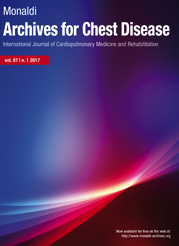The diagnostic value of inflammatory biomarkers in the diagnosis and treatment of influenza B in adults
All claims expressed in this article are solely those of the authors and do not necessarily represent those of their affiliated organizations, or those of the publisher, the editors and the reviewers. Any product that may be evaluated in this article or claim that may be made by its manufacturer is not guaranteed or endorsed by the publisher.
Authors
Influenza can lead to various complications if not promptly diagnosed and treated. This study aims to assess the predictive value of the neutrophil-to-lymphocyte ratio (NLR), platelet-to-lymphocyte ratio (PLR), and systemic inflammation response index (SIRI), which are derived from routine blood parameters, in diagnosing influenza infection in adults. This study included 130 patients diagnosed with and treated for influenza B from 2022 to 2024. The control group comprised 130 healthy individuals. Influenza B diagnosis was confirmed using rapid antigen kits, and complete blood counts were analyzed via spectrophotometric/impedance methods, with statistical evaluation applied to the results. Among the 130 patients included, 55.3% (n=72) were male. Patients were categorized into two groups: those treated on an outpatient basis and those hospitalized. NLR, PLR, and SIRI values were significantly higher in hospitalized patients than in outpatients (p<0.001 for all parameters). In patients diagnosed with influenza B, NLR [6.11 (1.76-17.15)], PLR [266.66 (138.20-914.28)], and SIRI [3.56 (0.82-10.11)] values were significantly elevated compared to the control group [NLR 1.63 (0.45-2.22); PLR 99.21 (61.84-169.37); SIRI 0.73 (0.45-1.48)] (p<0.001 for all comparisons). The NLR threshold was set at 2.36, achieving 96.7% sensitivity and 100% specificity (p<0.001). The PLR threshold was 153.41 [area under the curve (AUC)=0.988, sensitivity: 93.3%, specificity: 92.9%, p<0.001], and the SIRI threshold was 1.36 (AUC=0.977, sensitivity: 93.1%, specificity: 92.9%, p<0.001), confirming the diagnostic relevance of these parameters. This study demonstrates that NLR, PLR, and SIRI, which are non-invasive, cost-effective, simple, and reproducible biomarkers, provide strong prognostic value in diagnosing and managing adult patients with influenza B, particularly in cases requiring hospitalization.
Ethics approval
This retrospective, single-center study was approved by the Ethics Committee for Clinical Research at Gazi University Faculty of Medicine (decision number 1153, dated 09.07.2024).How to Cite

This work is licensed under a Creative Commons Attribution-NonCommercial 4.0 International License.






